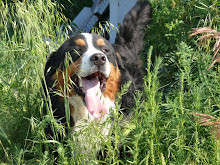The U.S. government spends upwards of 1 billion dollars per year on animal products that feed government programs and agencies, like the National School Lunch Program, the federal Bureau of Prisons, and the Armed Services.
The Prevention of Farm Animal Cruelty Act, H.R. 4733, would require the government to purchase food for these programs only from farms where animals can move freely and extend their limbs in their confinement-- that means no gestation crates, veal crates, or battery cages. Since it's essentially impossible for every packer to trace each piece of meat back to it's farm of origin, they would need all of their suppliers to comply with these standards; so the law would apply to virtually every farm in the country.
I'd just like you to take a moment to consider some facts.
United States' Prevention of Farm Animal Cruelty Act, H.R. 4733 will never be passed, because it would increase costs to beyond an acceptable level.
Prisons used to have farms where inmates could be kept occupied doing something useful and also providing food for the prison kitchens and to sell locally or give to local food banks. some still do, in Canada, these prison farms, where animals were kept in small numbers, and no doubt got much care and attention, and where inmates learned a valuable trade, will all be closed down by the end of this year. Why you ask? Because Corrections Canada doesn't want to spend the $4million annually that it costs to run these farms.
When a head teacher in rural England taught her pupils the realities of small scale sheep rearing, in a sheep rearing area of the country she was hounded out of her job. Other similar programmes in schools have been condemned by peta. 4H programmes are also condemned by peta.
So now I have a question for you. Where are the people going to come from who are going to operate these free range facilities that you propose? Where will they learn the the skills they will need to keep the animals healthy and productive?
Peta claims "The green pastures and idyllic barnyard scenes of years past are now distant memories."
In fact such scenes only ever existed in movies, novels of fiction and in pictures. The reality was very different.
Did it ever occur to you that there were sound reasons farmers wanted to change the way they raise animals?
Prior to the widespread inception of intensive livestock operations farmers would keep a cow, a pig or two and maybe a few chickens. These animals provided food for the family with maybe a little left over to sell. The animals lived in cold draughty sheds with no power or water, but plenty of disease carrying vermin. To keep the heat in, and I'm sure you understand how important that is in Canada, buildings had low roofs and small windows and doorways. To take straw bedding into the buildings and to clean out manure the farmer had to use a wheelbarrow and a fork, water and feed had to be carried in a bucket. In winter the water froze. In summer the flies and mosquitoes were unbearable.
Life in those idyllic days was tough on both the farmers AND the animals, and what's more, cruelty was far more common than it is today.
After the second world war farmers wanted something better for themselves and for the animals.
At the same time the retail food system began to grow in order to feed the growing urban populations. Supermarkets became more common than corner stores. The supermarket chains wanted large quantities of a standard product at a low price.
So in order to meet the demand farmers began to specialise.
For example, a retailer want to buy 1000 sides of pork (to meet demand from consumers) of consistent size and quality at the lowest price.
The options are:
To buy 500 hogs from Joe Brown that are the same age, the same size, the same colour, have the same fat to lean ratio and can be delivered by two trucks at the same time.
Or
To buy various numbers of pigs from a number of farmers. The pigs available are different ages, different sizes, some have white skin and some have brown skin or spots (it might not sound important but it it) some are fatty and some are lean, they are not all available on the same day, and it will take several trucks to drive all over the area to gather them up and deliver them to the slaughter house.
Which option do you think the retailer will choose?
Modern livestock facilities are clean, well lit, well ventilated buildings where animals lead far easier lives than their ancestors.
The last thing the world need is sending livestock farming back to the dark ages.

No comments:
Post a Comment